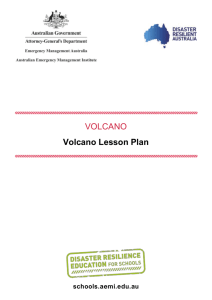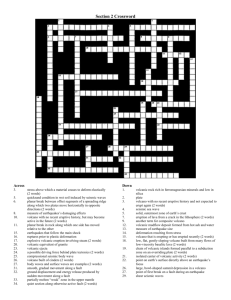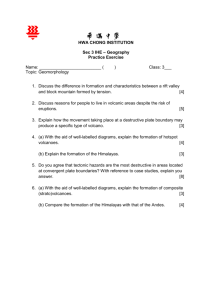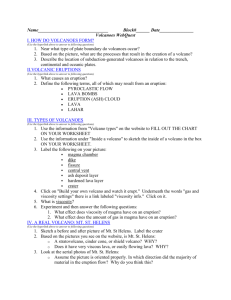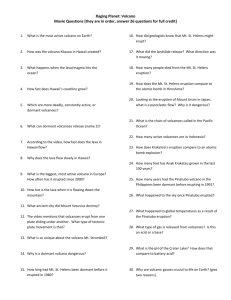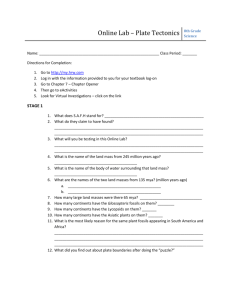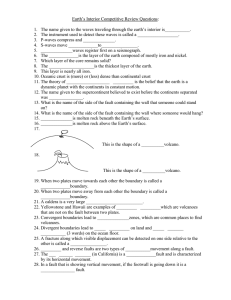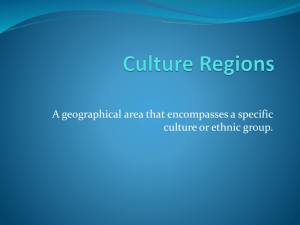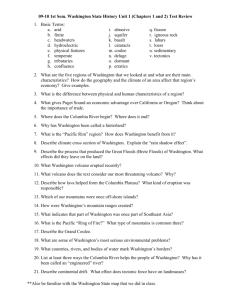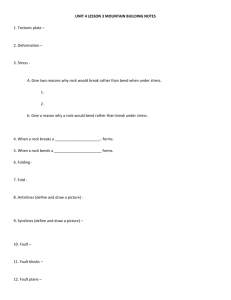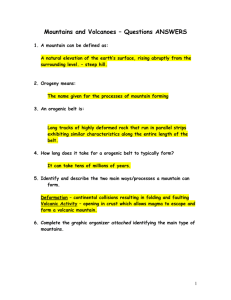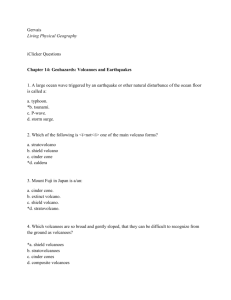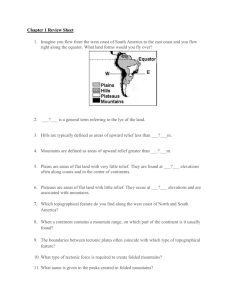NAME PERIOD ______ DATE UNIT 4 LESSON 3: MOUNTAIN
advertisement
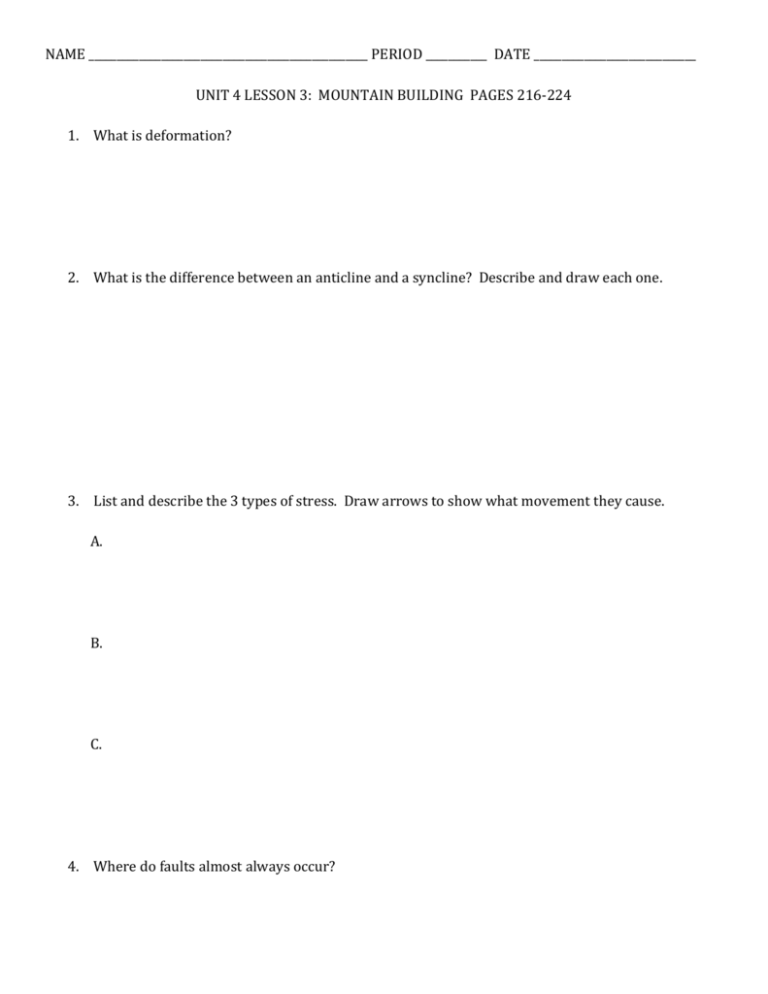
NAME __________________________________________________ PERIOD ___________ DATE _____________________________ UNIT 4 LESSON 3: MOUNTAIN BUILDING PAGES 216-224 1. What is deformation? 2. What is the difference between an anticline and a syncline? Describe and draw each one. 3. List and describe the 3 types of stress. Draw arrows to show what movement they cause. A. B. C. 4. Where do faults almost always occur? 5. Describe the 3 types of faults. Include what type of stress causes each it, movement along the fault and type of plate boundary associated with each one. Label the hanging and footwall for the normal and reverse fault diagrams. A. Normal fault B. Reverse fault C. Strike-slip fault 6. Draw and describe the 3 types of mountains. A. Folded mountains B. Volcanic mountains C. Fault-block mountains UNIT 4 LESSON 4: VOLCANOES PAGES 226-236 1. What is a volcano? 2. What is the difference between magma and lava? 3. Volcanic Landforms A. Shield Volcano Shape: Type of eruption: Material it’s made from: Example: B. Cinder Cone Shape: Type of eruption: Material it’s made from: Example: C. Composite Volcano Shape: Type of eruption: Material it’s made from: Example: D. Describe a fissure. E. Describe a lava plateau. F. Describe a crater. G. Describe how a caldera forms. 4. Where do volcanoes usually form? 5. Which types of volcanoes are common at divergent boundaries? 6. Which type of volcano is common at convergent boundaries? 7. What can cause a volcano to erupt explosively? 8. What is a hot spot? List 2 examples. 9. What are some hazards and some benefits of volcanism? A. Hazards: B. Benefits:






